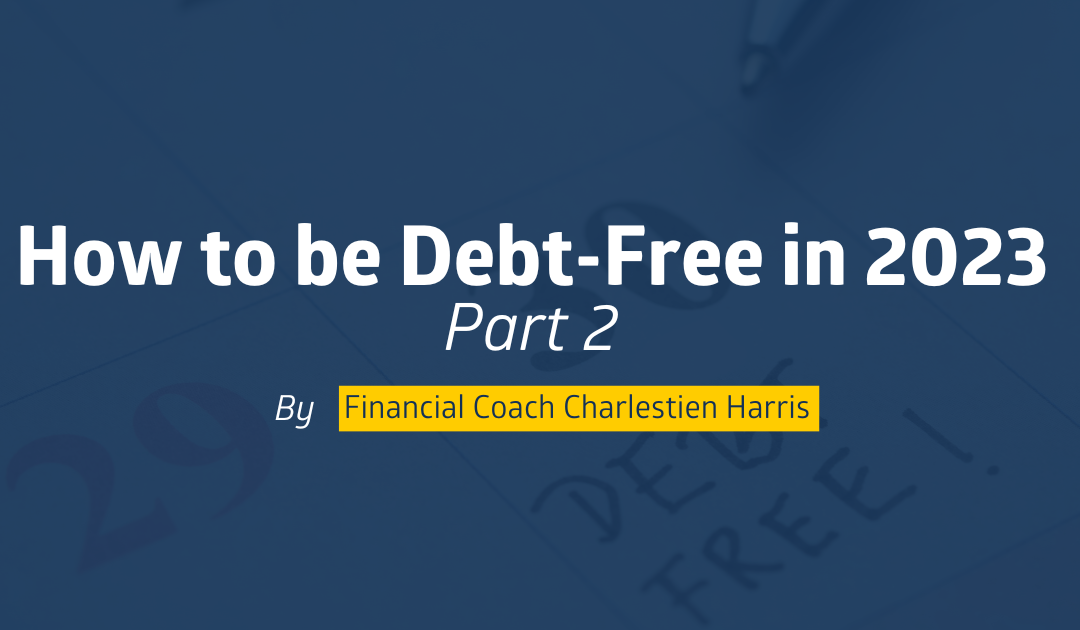By Charlestien Harris
Debt is more prevalent now than in any of the past years. It is estimated that American households carry a total of $17 trillion in debt as of the first quarter of 2023, and the average household debt is $101,915 as of the end of 2022. Accumulating debt has become more common, making it increasingly important to understand how to manage your debt.
First, you must understand what type of debt you have, and then you can devise a plan that may help you reach the goal you set at the beginning of the year to be debt-free by the end of 2023! I have already described the different debt elimination methods in a previous article. So, let’s look at the different types of debt, and then you can decide which debt elimination method will work best for your financial situation.
Revolving vs. Non-revolving Debt
Revolving debt usually refers to any money you owe from an account that allows you to borrow against a credit line. Every debt is either revolving or non-revolving. Revolving debt is one where you can continuously spend and pay off the debt. Common examples of revolving credit include credit cards, home equity lines of credit (HELOCs), and personal and business lines of credit. Credit cards are the best-known type of revolving credit.
Non-revolving debt is one where you borrow a lump sum and then pay it off over a specific term. Non-revolving credit, or installment credit, is your standard loan. Unlike revolving debt, you are not continuously adding to the original amount of the debt. It has a clearly defined end date and a fixed payment schedule with interest already factored into each payment. Once the loan term is complete, you would need to apply for another one to access more funds. Non-revolving debts include mortgages, student loans, personal loans, and car loans.
Secured vs. Unsecured Debt
A secured debt is one that is backed by collateral or an asset the lender can seize if you don’t make your payments. Mortgages and auto loans are secured debts since your lender can seize your home or car if you don’t pay them back. Secured debt typically has lower credit requirements and interest rates. If you are approved for a secured loan, a lender will put a lien on an asset until the loan is paid off. Keep in mind that a drawback of a secured loan is that you risk losing the collateral if you default on the loan. Unpaid secured debt will give your creditor the right to seize your property as payment.
On the other hand, unsecured debts don’t have any collateral behind them. A lender is taking a bigger risk with an unsecured personal loan, so it seems to make sense that the interest rate would be a bit higher on a riskier loan. The lender can still take legal action to get their money, but there’s no asset they can seize from you. Penalties such as credit score decreases and the debt being sent to a debt collector can drastically reduce your chances of getting another loan (secured or unsecured) or even having the ability to refinance. Student loans and credit cards are examples of unsecured debts.
Understanding Your Debt is Equally Important
Of course, your credit score, your income, and your existing debt are big factors in getting approved for any loan. It’s important to know about and fully understand each debt you have. For each debt, you should know your:
- Total balance
- Current/Future interest rate
- Minimum monthly payment
- Estimated payoff date
Once you understand your debt terms and the type of debt you have, you can decide whether to use a debt payoff method like the debt snowball or debt avalanche to pay it off. You can be debt-free in 2023 if you educate yourself about the type of debt you have and which debt elimination method would best suit your financial needs.
For more information on this and other financial topics, feel free to email me at Charlestien.Harris@testbanksouthern.aceone.io or call me at 662-624-5776.
Until next week — stay financially fit!

